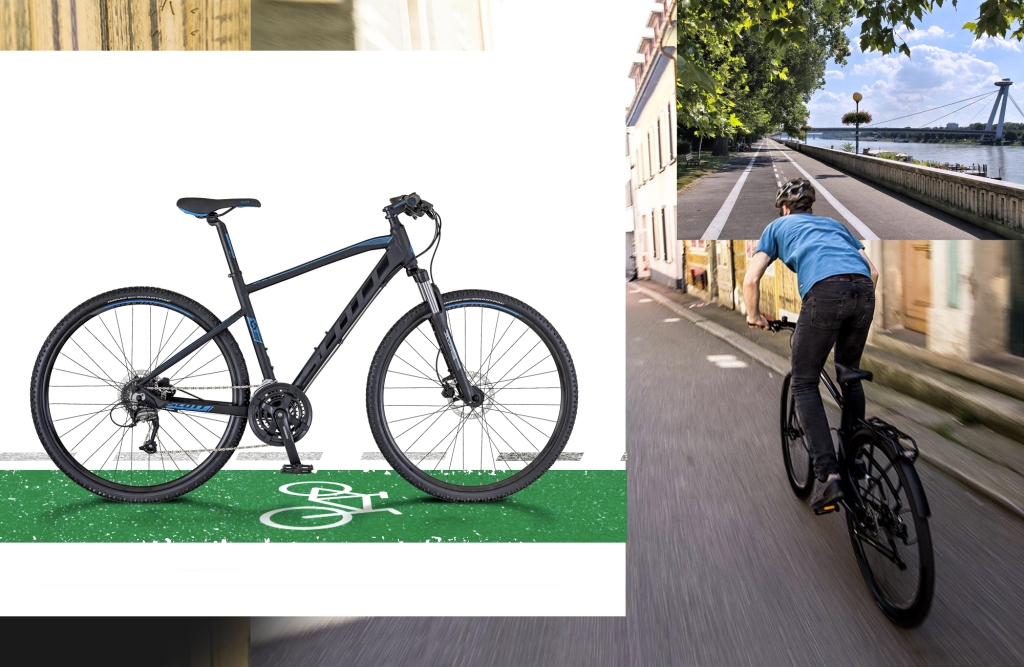Getting into riding can be a daunting task. With the never ending specifications of bikes and sheer volume of information available to us, it’s no wonder a new rider can get confused. When you really break it down though it’s simple – when your bike is rubber side down, what sort of terrain is it travelling over? Dirt? Gravel? Asphalt? Keep reading to find out which bike is right for you.

ROAD
A road bike does what it says on the tin, it’s used to ride on smooth paved roads. These bikes have smooth skinny tyres, drop handlebars and are generally lighter than most other types of bikes. They are designed to take you as fast and far as your legs will let you and offer large gear ratios which let you push yourself on flat roads and grind up climbs. Road riding is also a great form of fitness which is low risk and super forgiving on your joints.
Types of terrain a road bike is used for: Paved roads and streets,
paved paths, smooth paths.

MOUNTAIN
If you’re not into cruising down perfectly smooth roads and prefer coming home from a ride with mud and a massive smile on your face then we bet you’d like mountain biking. For this you will need a mountain bike. These bikes are normally characterised by wide knobbly tyres, suspension, slack frame geometry and a flat handlebar. Dual suspension mountain bikes offer both rear and front suspension perfect for tackling rough descents and drop offs, whereas hardtail mountain bikes provide all of their suspension at the front of the bike, perfect for less rowdy trails but versatile enough to take to technical climbs or low key dirt jumps.
Types of terrain a mountain bike is used for: Off-road single track trails,
dirt and gravel paths.

COUNTRY
Lets face it, not everyone enjoys hurtling down a mountain at breakneck speed. Some people love the thrill of hitting rougher terrain and tackling muddy climbs but prefer to leave their bodies and bikes intact. The good news is there’s a group of bikes that exist for this type of rider. These bikes are normally characterised by shorter travel suspension up front to soak up small hits, big gear ranges and slack geometry to tackle climbs. These bikes are perfect for rural areas with muddy paths and sloppy terrain making them a fun all rounder which you should never underestimate.
Types of terrain a mountain bike is used for: Muddy paths, gravel paths, mellow singletrack and light trails.

GRAVEL
Wherever you live in the world there’s going to be a little bit of single track or service road which looks easy to blast your road bike over. Don’t do it. Before you can can say ‘workshop service’ your headset will be blown out and your wheels buckled, not to mention how difficult you’ll find it climbing up any form of dirt hill with those smooth tyres. To tackle this sort of terrain you’ll need a gravel bike. Simply said a gravel bike is a cross between a road bike and cyclo-cross bike which is used for muddy conditions. Gravel bikes have slacker geometry than road bikes making them less twitchy and more stable on the ground when riding over unpredictable surfaces. They also offer wider tyres and disc brakes which ensure the stopping power is always there when you need it.
Type of terrain a gravel bike is used for: Mellow single tracks, farm roads, gravel, crushed cobblestones, tarmac.

CITY
Why can’t we have the best of both worlds? If you want the comfort of a mountain bike crossed with the speed and efficiency of road bike then the Hybrid is for you. Their large padded seats and upright handle bars make for a super comfortable riding position whilst the front suspension lets you soak up pesky potholes and bump up curbs without damaging your wheels. Hybrid bikes are perfect for commuting to work or running errands around town. With the popularity of E-bikes really starting to take off, E-Hybrid bikes are now available meaning it may be time to ditch the car and the traffic and arrive at work refreshed and in style.
Type of terrain a hybrid bike is used for: Smooth tarmac, city roads, mellow single tracks.
